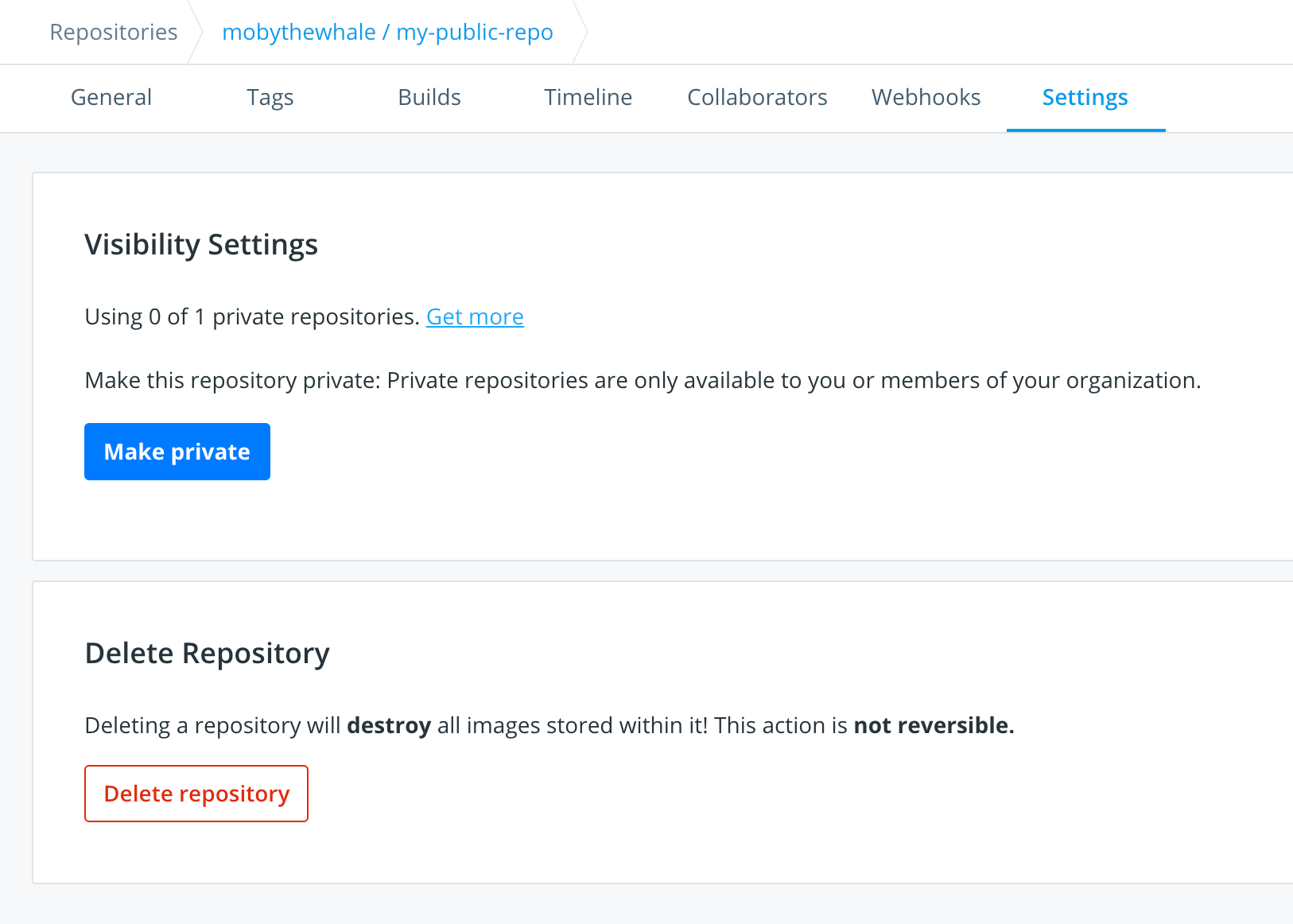2.5 KiB
| description | keywords | title |
|---|---|---|
| Configuring repositories on Docker Hub | Docker, docker, trusted, registry, accounts, plans, Dockerfile, Docker Hub, webhooks, docs, documentation, creating, deleting, consolidating | Configure repositories |
When configuring repositories, your private repositories let you keep your container images private, to your personal account or within an organization or team. You can also view your permissions or manage your users' access to those repositories.
Private repositories
You can make an existing repository private by going to its Settings tab and select Make private.
You get one free private repository with your Docker Hub user account (not available for organizations you're a member of). If you need more private repositories for your user account, upgrade your Docker Hub subscription from your Billing Information{: target="blank" rel="noopener" class=""} page.
Once you've created a private repository, you can push and pull images to and
from it using Docker.
Note: You must sign in and have access to work with a private repository. Private repositories aren't available to search through the top-level search or
docker search.
You can choose collaborators and manage their access to a private repository from that repository's Settings page. You can also toggle the repository's status between public and private, if you have an available repository slot open. Otherwise, you can upgrade your Docker Hub{: target="blank" rel="noopener" class=""} subscription.
Permissions reference
Permissions are cumulative. For example, if you have Read & Write permissions, you automatically have Read-only permissions:
Read-onlyaccess lets users view, search, and pull a private repository in the same way as they can a public repository.Read & Writeaccess lets users pull, push, and view a repository. In addition, it lets users view, cancel, retry or trigger buildsAdminaccess lets users pull, push, view, edit, and delete a repository. You can also edit build settings, and update the repositories description, collaborators rights, public/private visibility, and delete.
Note
A user who hasn't verified their email address only has
Read-onlyaccess to the repository, regardless of the rights their team membership has given them.
